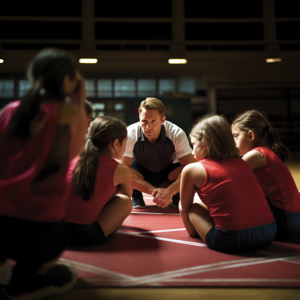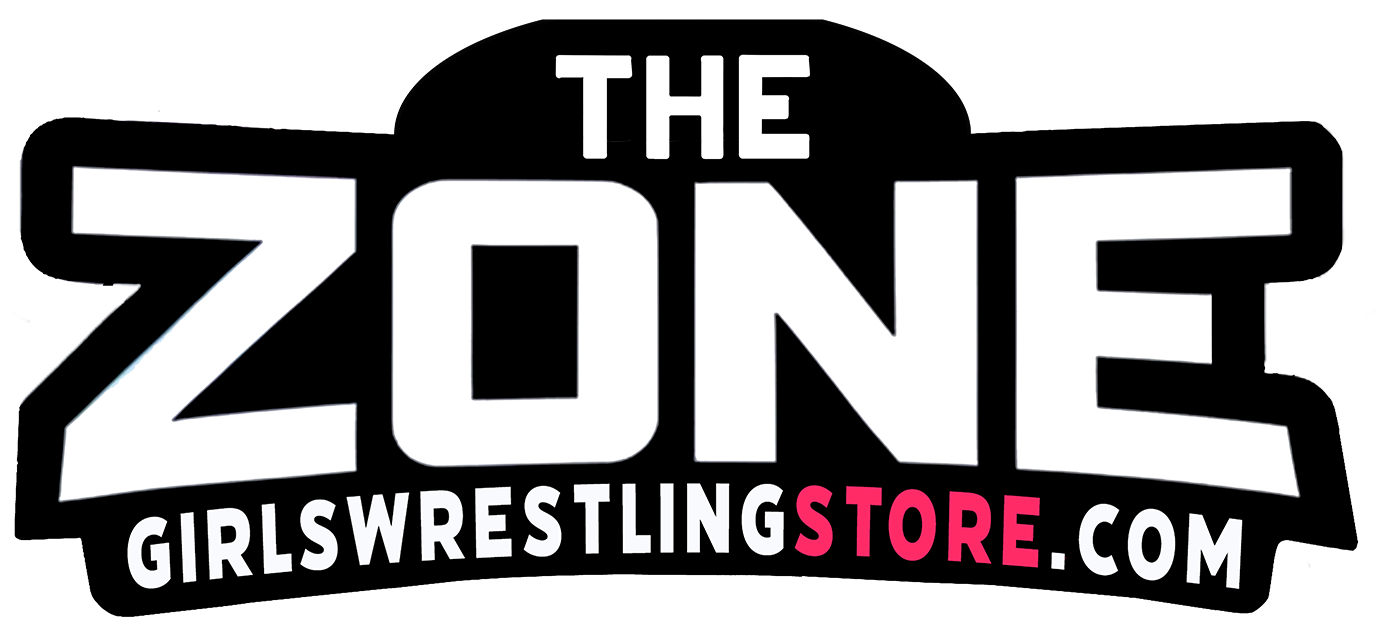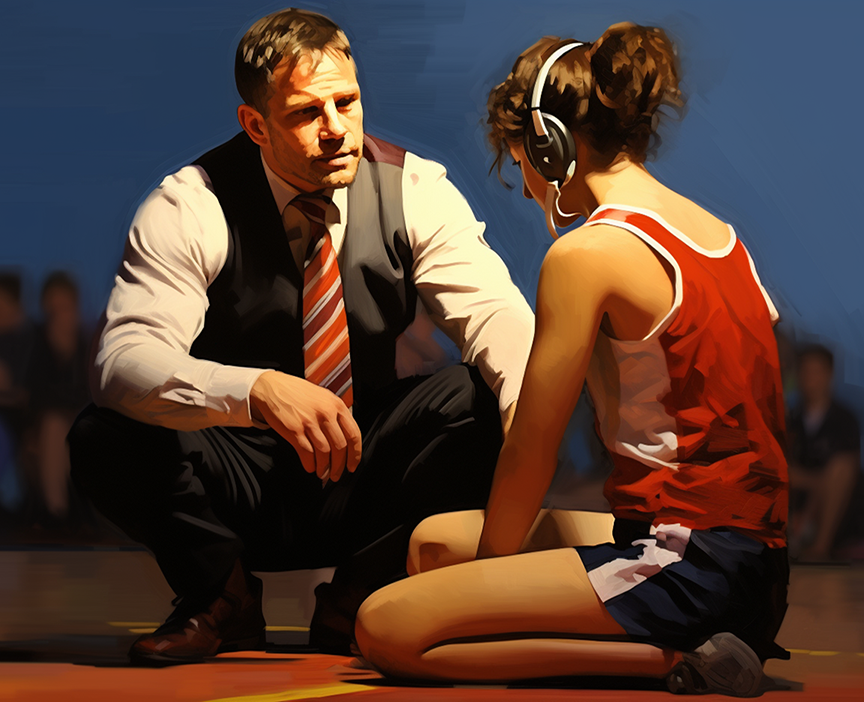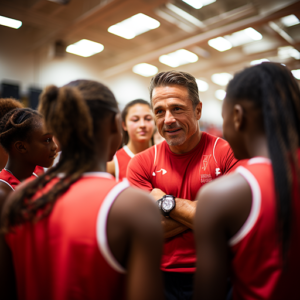10 Essential Strategies for Forming a Stellar Girls’ High School Wrestling Team
Table of Contents
-
Introduction to Recruiting
- Overview of the Recruiting Process
-
Identifying Potential Recruits
- Scouting and Approaching Candidates
-
Engaging with Prospects
- Communication and Persuasion Strategies
-
Training and Evaluation
- Developing Skills and Assessing Progress
-
Building Team Culture
- Fostering Team Spirit and Values
-
Season-End Celebrations
- Recognizing Achievements and Team Bonding
-
Off-Season Activities
- Training Programs and Camps
-
Mentorship and Skill Transfer
- Senior Members Guiding New Recruits
-
Early Bird Recruiting
- Preparing for the Next Season
Conclusion and Future Planning
-
Reflecting and Preparing for New Challenges

Introduction: The Quest to Build a Champion Wrestling Team for Girls
Welcome to the ultimate guide for recruiting girls to your high school wrestling team. Brought to you by “the EDGE”. If you’re reading this, chances are you’re a coach with a mission—building a wrestling team that not only competes but thrives. But let’s set the stage with a real-world scenario that many coaches face.
Meet Coach Taylor: The New Leader on the Mat
Imagine you’re Coach Taylor, recently hired by a local high school to helm their girls’ wrestling team. You’re passionate, experienced, and ready to make a difference. But there’s a catch: your team currently consists of just six girls. They’re enthusiastic, sure, but they’re also new to the sport. You have a limited budget for recruiting, and the wrestling season is fast approaching.
The Team: A Mix of Raw Talent and Boundless Enthusiasm
Your six team members are a diverse group, each bringing her unique strengths and challenges. There’s Emily, the natural athlete; Sarah, who’s small but incredibly agile; and Jessica, who has never wrestled before but has an infectious spirit. Then there’s Priya, who’s balancing academics and wrestling; Maria, who’s shy but shows promise; and Zoe, the team’s unofficial morale booster.
The Challenge: Building from the Ground Up
You’re starting almost from scratch. The school has had a wrestling program before, but it’s never been a powerhouse. The facilities are decent but not state-of-the-art. You have some wrestling mats, a modest gym, and a lot of determination. Your challenge is to turn this group of six into a cohesive, competitive team while also recruiting new talent to ensure the program’s sustainability. Understanding the dynamics of girls wrestling against boys can help you prepare your team for various scenarios.
The Mission: A Champion Team in the Making
Your mission is clear: to build a wrestling team that embodies skill, teamwork, and a winning attitude. If you’re wondering why girls should even consider wrestling as a sport, this article sheds light on its numerous benefits. You want to create an environment where young girls can discover the sport, develop their abilities, and perhaps most importantly, grow as individuals. You’re not just building athletes; you’re building future leaders.
So, how do you go about it? Creating a fun environment is essential for retaining your team members; learn how help your parents make coming practices and tournaments enjoyable. How do you turn this fledgling team into a force to be reckoned with, all while navigating the complexities of high school sports recruiting?
That’s exactly what this blog aims to answer. We’ve laid out a comprehensive 10-step guide to recruiting for a girls’ high school wrestling team. From assessing your team’s needs to celebrating your successes, we’ve got you covered. So, let’s dive in and start building your dream team.
Step 1: Assess Your Current Team – The Foundation of Your Wrestling Revolution
Welcome to the wrestling ring, Coach! You’ve got six young warriors on your team, each one a bundle of raw energy and untapped potential. But before you start dreaming of championship titles, let’s get down to the nitty-gritty. Your first mission, should you choose to accept it, is to assess your current team. And no, we’re not just talking about how many push-ups they can do.
The One-on-One Interview: The Soul of Your Team
Sit down with each of your six wrestlers individually. Look them straight in the eye and ask, “Why are you here?” This isn’t some philosophical mumbo-jumbo; it’s the cornerstone of your team’s identity. Are they here to break barriers, to prove their mettle, or just for the sheer thrill of the sport? Each answer is a piece of the puzzle, a clue to unlocking your team’s full potential.
The Mat Test: Skill Meets Will
Next, it’s time for some action. Get your team on the mat and let them wrestle. But don’t just stand there with a stopwatch; this is your chance to delve into the psyche of your wrestlers. Who’s got the technique down pat? Who’s struggling but showing grit? Who’s got that fire in their eyes that says, “I’m here to win”? Take notes, Coach; you’re not just building a team, you’re sculpting warriors.
The SWOT Analysis: Your Tactical Blueprint
Strengths, Weaknesses, Opportunities, and Threats. Conduct a SWOT analysis for each wrestler and for the team as a whole. This isn’t some corporate jargon; it’s your tactical blueprint. Know what each wrestler brings to the table and where they need to improve. Identify the opportunities for growth and be aware of potential pitfalls. Maintaining a healthy weight is crucial for your wrestlers; discover the right approach to making weight in girls’ wrestling
Why This Matters
Listen up, Coach. You’ve got limited resources and a team that’s hungry for success. Every move you make, every decision you take, has to be calculated yet audacious. You’re not running a summer camp; you’re leading a revolution in girls’ wrestling. And it all starts with knowing your team inside and out.
So there you have it, the first step in your journey to wrestling glory. It’s not just about drills and skills; it’s about building a tribe, a sisterhood of warriors ready to take on the world. And remember Coach, revolutions aren’t won in a day, but they do start with a single step. So take that step wisely.
Step 2: Understand Your Target Audience – The Secret Sauce of Successful Recruiting
Alright, Coach, you’ve got your current team assessed and you’re feeling good about it. But let’s not pop the champagne just yet. A team of six isn’t going to cut it in the wrestling world. You need more warriors, more fire, more grit. And that brings us to Step 2: understanding your target audience. Trust us, this is the secret sauce of successful recruiting.
The Who: Identifying Your Future Warriors
Before you go on a recruiting spree, you’ve got to know who you’re looking for. Are you aiming for seasoned athletes looking for a new challenge? Or are you open to complete newbies who don’t know a headlock from a padlock but have the spirit of a lion? Define your ideal recruit. This isn’t just about filling weight classes; it’s about building a team culture. Knowing the right age for girls to start wrestling can be invaluable in buildng a program.
 The What: Interests, Hobbies, and Aspirations
The What: Interests, Hobbies, and Aspirations
Now, let’s get into the minds of these potential recruits. What are they into? Soccer, gymnastics, debate club? Understanding their interests can give you a killer angle for your pitch. For instance, if they’re into team sports, highlight the camaraderie and sisterhood of wrestling. If they’re into individual pursuits, talk up the self-reliance and discipline the sport demands.
The Where: Scouting Grounds
Where are you most likely to find these young warriors? In the gym, the schoolyard, or maybe even in the art room sketching wrestling moves? Identifying the right scouting grounds is half the battle won. Don’t just limit yourself to the obvious spots; sometimes the best recruits come from the most unexpected places.
The Why: The Emotional Hook
Last but not least, why should they even care? You’ve got to give them a reason, an emotional hook that makes them say, “Yes, I want to be a part of this!” Whether it’s the thrill of competition, the allure of mastering a new skill, or the simple joy of being part of a team, find that hook and use it.
The Bottom Line
Listen, Coach, recruiting isn’t just about numbers; it’s about finding the right fit for your team’s ethos and objectives. You’re not just building a team; you’re building a legacy. And that starts with understanding who you want in your corner, fighting the good fight. So put on your scouting hat and get ready to find the next generation of wrestling superstars. Your future champions are out there; you just need to know where to look.
Step 3: Craft Your Pitch – The Art of Selling the Dream
So you’ve assessed your current team and you’ve got a solid understanding of your target audience. Now comes the fun part: crafting your pitch. This isn’t just about throwing out some buzzwords and hoping they stick. No, Coach, this is about selling the dream, the vision, the very essence of what makes girls’ wrestling a life-changing experience.
The Message: What’s Your Story?
First things first, what’s the story you’re telling? Is it about empowerment, about breaking barriers, or perhaps about the sheer adrenaline rush of the sport? Your message should resonate with the values and aspirations of your target audience. This isn’t just a sales pitch; it’s a narrative that will define your team’s identity.
The Medium: Choose Your Weapons Wisely
Are you going to rely on school assemblies, social media campaigns, or good old-fashioned word-of-mouth? Each medium has its pros and cons, and the key is to choose the ones that align with your audience’s habits. If they’re all over Instagram, then a killer IG campaign might be your ticket. If they value face-to-face interactions, then maybe a school assembly or a community event is the way to go.
 The Spokespeople: Your Team as Ambassadors
The Spokespeople: Your Team as Ambassadors
Don’t underestimate the power of testimonials. Your current team members are your best spokespeople. Get them involved in the pitch. Let them share their personal stories, their triumphs, and even their struggles. Authenticity is the name of the game here, and who better to vouch for the team than those who are living the experience?
The Call to Action: Make It Irresistible
End your pitch with a compelling call to action. Whether it’s an invitation to a trial practice, an exclusive workshop, or even a one-on-one chat with you, the coach, make it something they can’t resist. Give them a taste of the action, a sneak peek into the world they could be a part of.
The Takeaway
Crafting your pitch is like choreographing a wrestling match. Every move, every hold, every pin is calculated for maximum impact. You’re not just recruiting athletes; you’re building a community, a sisterhood, a force to be reckoned with. So take your time, fine-tune your message, and deliver it with the passion and conviction it deserves. After all, you’re not just selling a sport; you’re selling a way of life.
Text content
Step 4: Leverage School Resources – Your Secret Arsenal
You’ve got your team assessed, your target audience mapped out, and your pitch perfected. Now, it’s time to tap into the goldmine that is your school’s resources. You might be thinking, “But my budget is tighter than a headlock!” Don’t worry, Coach; this is about being resourceful, not flush with cash.

The Bulletin Board: Old School but Gold
Don’t underestimate the power of a well-placed flyer on the school bulletin board. Design a captivating poster that encapsulates the spirit of your team and the excitement of the sport. Use compelling visuals and a strong call to action. Remember, the goal is to catch their eye and make them stop and think, “Hey, I want to be a part of that!”
School Announcements: Your Daily Plug
Get in touch with whoever’s in charge of the school’s daily announcements. A 30-second slot talking about the team’s achievements or upcoming events can do wonders for visibility. Make it fun, make it catchy, and most importantly, make it memorable.
Teacher Allies: Your Eyes and Ears
Teachers can be your best allies in this recruiting mission. They interact with students daily and can identify those who might be a good fit for the team. Brief them on what you’re looking for and ask them to recommend students who might be interested. A word of encouragement from a trusted teacher can be incredibly persuasive.
School Events: Your Recruiting Ground
Whether it’s a school fair, a sports day, or any other event where students gather, make sure you have a presence there. Set up a booth, conduct live demonstrations, or even host mini wrestling clinics. The aim is to create buzz and excitement around the team.
Clubs and Organizations: Cross-Promotion Magic
Collaborate with other clubs and organizations within the school for cross-promotion. If there’s a fitness club, a women’s empowerment group, or even a health and wellness committee, partner with them for events or workshops. It’s a win-win situation that boosts visibility for both parties.
The Bottom Line
Leveraging school resources is all about maximizing exposure without breaking the bank. It’s about being where your potential recruits are and making the most of the platforms available to you. So go ahead, make those connections, and use the school as your recruiting playground. After all, the next wrestling superstar could be just a classroom away.
Step 5: Engage with the Community – The Extended Wrestling Family
You’ve got your internal school resources working like a well-oiled machine. But let’s not forget, the community outside those school walls can be just as vital in your recruiting efforts. Think of it as extending your wrestling family, a broader network that can help you find those hidden gems of talent.
Local Businesses: The Mutual Benefit
Reach out to local businesses that align with your team’s ethos—think fitness centers, health food stores, or even local boutiques that sell activewear. Propose a partnership where they sponsor an event or offer special discounts for your team, and in return, you promote their business during matches or on social media. It’s a symbiotic relationship that can pay dividends.
Community Centers: The Heartbeat of the Town
Community centers are often the heartbeat of any town, hosting a range of activities and events. Why not host a wrestling workshop or a demo match at the local community center? It’s a fantastic way to introduce the sport to a wider audience and scout for potential talent.
 Parent Associations: Your Advocacy Group
Parent Associations: Your Advocacy Group
Never underestimate the power of parents in shaping their children’s interests. Engage with parent associations and offer to give a talk about the benefits of wrestling—physical fitness, discipline, teamwork, and so on. Parents can be your biggest advocates, encouraging their daughters to give wrestling a try.
Alumni Network: The Legacy Continues
Tap into your school’s alumni network for support. Whether it’s financial sponsorship, mentorship, or even just spreading the word, alumni who were involved in wrestling during their school days are often more than willing to help. They are the living testament to the impact the sport can have, and their endorsement carries weight.
Social Media: The Digital Town Square
Don’t forget the digital community. Regular updates, behind-the-scenes looks, and shoutouts on social media platforms can create a sense of belonging even before someone joins the team. Use hashtags relevant to your community to increase visibility.
The Takeaway
Community engagement isn’t just about casting a wider net for recruitment; it’s about embedding the wrestling program into the fabric of the community. It’s about creating a culture that celebrates and supports the sport, making it easier for new recruits to take the plunge. So step out of the gym and into the community; you never know where you’ll find your next wrestling prodigy.
Step 6: Host Open Practices and Workshops – The Live Audition
You’ve laid the groundwork, Coach. You’ve assessed your team, understood your audience, crafted your pitch, leveraged school resources, and engaged with the community. Now it’s showtime. Hosting open practices and workshops is your live audition, the stage where potential recruits can experience firsthand the thrill of wrestling.
The Open Mat: A Taste of the Action
Designate certain practice sessions as “Open Mat” days where interested students can join in. Make it a mix of drills, sparring, and team-building activities. The aim is to give them a taste of what being on the team is like. It’s one thing to hear about it; it’s another to feel the mat beneath your feet and the adrenaline pumping through your veins.
Skill Workshops: The Masterclass
Organize skill-specific workshops led by you or even guest coaches. Whether it’s mastering the art of the takedown or perfecting the pin, these workshops serve a dual purpose. They help your current team improve while giving potential recruits a chance to learn something valuable. It’s a win-win that also serves as a subtle recruitment tool.
 Q&A Sessions: Demystifying the Sport
Q&A Sessions: Demystifying the Sport
Include a Q&A session at the end of each open practice or workshop. This is the time to demystify the sport, to answer questions about practice schedules, competitions, and commitments. Transparency is key here; you want to give them all the information they need to make an informed decision.
Parental Involvement: The Support System
Invite parents to these open sessions. Let them see the environment their daughters will be a part of. Address any concerns they might have about safety, time commitment, or academics. A supportive parent can often be the final nudge a hesitant recruit needs.
The Showcase: Your Team’s Time to Shine
Let your current team members take the lead during these sessions. Let them demonstrate techniques, share their experiences, and act as mentors. Their enthusiasm and camaraderie can be infectious, serving as a live testimonial to the benefits of joining the team.
The Takeaway
Open practices and workshops are your live stage, a real-time interaction that can tip the scales in your favor. It’s where the theoretical meets the practical, where interest can ignite into commitment. So roll out the mats, put on a show, and let the magic of wrestling do the rest. After all, some things just need to be felt to be believed.
Step 7: Follow-Up and Personalized Outreach – The Art of Sealing the Deal
You’ve dazzled them with open practices and workshops, but the game isn’t won yet, Coach. The next crucial step is the follow-up. This is where you move from general interest to specific commitment, where you seal the deal. It’s the art of turning maybe into a resounding yes.
 Personalized Emails: The Direct Approach
Personalized Emails: The Direct Approach
Send out personalized emails to those who attended your open practices and workshops. Thank them for their time and express how much you’d love to have them on the team. Attach some highlights or photos from the event to jog their memory and reignite that initial excitement.
One-on-One Meetings: The Heart-to-Heart
For those who showed a keen interest but are still on the fence, schedule one-on-one meetings. This is your chance to address any specific concerns or questions they might have. It’s also an opportunity to get to know them better, to understand what drives them, and how they could fit into the team’s dynamics.
Team Testimonials: The Power of Peer Influence
Include testimonials from current team members in your follow-up communications. Hearing from peers who were once in their shoes can be incredibly persuasive. It adds a layer of authenticity and relatability to your pitch.

Incentives: The Sweeteners
Offer some incentives to make the decision easier. Maybe it’s a free team t-shirt, a discounted wrestling camp, or even just the promise of a dedicated mentor from the current team. Small gestures can make a big impact.
Time-Limited Offers: Create a Sense of Urgency
If possible, create a sense of urgency with time-limited offers. Whether it’s a special training session or a team outing, make it exclusive to those who commit within a certain timeframe. The fear of missing out can be a powerful motivator.
The Takeaway
The follow-up is where you close the loop, turning initial interest into concrete commitment. It’s a delicate dance, a blend of persuasion and genuine interest in the individual. Remember, you’re not just recruiting athletes; you’re building a community. And like any good community, it starts with meaningful, personalized connections. So go ahead, make that extra effort, send that follow-up email, schedule that meeting. Your future wrestling stars are just a conversation away.
Step 8: Celebrate Early Wins – The Momentum Builder
You’ve followed up, and the commitments are rolling in. It’s time to celebrate those early wins, Coach. Not just because it feels good, but because success breeds success. The momentum you build now can carry your recruiting efforts to new heights.
Welcome Ceremony: The Grand Introduction
Host a welcome ceremony for the new recruits. Make it an event, complete with team introductions, a tour of the wrestling facilities, and maybe even a mini-exhibition match. The aim is to make them feel like they’re already a part of something bigger than themselves.
 Social Media Shoutouts: The Digital Applause
Social Media Shoutouts: The Digital Applause
Feature your new recruits on the team’s social media platforms. A short bio, a few action shots, and a warm welcome message can go a long way in making them feel valued. Plus, it’s great publicity for the team and can attract even more interest.
Early Achievements: The Spotlight
If any of your new recruits or current team members achieve something noteworthy—be it in practice, in academics, or in a competition—shine a spotlight on it. Celebrate those achievements in team meetings, on social media, and even in school announcements.
 Team-Building Activities: The Bonding Factor
Team-Building Activities: The Bonding Factor
Organize team-building activities that are fun and inclusive. Whether it’s a hiking trip, a movie night, or a community service project, the goal is to foster a sense of camaraderie and unity. Teams that play together, stay together.
Parental Acknowledgment: The Unsung Heroes
Don’t forget the parents. Send them a thank-you note or even host a small gathering to acknowledge their support. Happy parents are often the most vocal advocates for your program.
The Takeaway
Celebrating early wins is not just about boosting morale; it’s a strategic move. It creates a positive feedback loop that can energize your entire recruiting campaign. It shows potential recruits that this is a team that values and celebrates each member’s contributions, no matter how small. So go ahead, pop that metaphorical champagne, and let the celebrations fuel your next wave of recruiting. After all, nothing attracts a crowd like a crowd.
Step 9: Evaluate and Adjust – The Continuous Improvement Loop
You’ve come a long way, Coach. Your team is growing, the momentum is building, but the work isn’t over yet. Now it’s time to evaluate your recruiting strategies and make necessary adjustments. This is your continuous improvement loop, the fine-tuning that turns a good program into a great one.
Metrics Matter: The Numbers Game
Start by gathering data on your recruiting efforts. How many attended your open practices? How many one-on-one meetings did you conduct? How many new recruits have you gained? These numbers will give you a clear picture of what’s working and what’s not.
Feedback Forms: The Voice of the People
Distribute feedback forms to both new recruits and those who chose not to join. Ask them about their experience with the recruiting process, what influenced their decision, and what could be improved. This is invaluable information that can guide your future efforts.
 Team Input: The Inside Scoop
Team Input: The Inside Scoop
Don’t forget to consult your current team members. They’re your eyes and ears on the ground, and their insights can be incredibly useful. Maybe they’ve noticed a common concern among potential recruits, or perhaps they have ideas for new recruiting channels you haven’t considered.
Strategy Revisit: The Pivot Point
Based on the data and feedback, revisit your recruiting strategy. Maybe the school announcements aren’t as effective as you thought, but the community workshops are a hit. Be willing to pivot your approach, reallocating resources to the most effective methods.
Set New Goals: The Next Milestone
With the evaluation complete, set new goals for the next phase of recruiting. Make them specific, measurable, and time-bound. This gives you and your team a clear target to aim for, keeping everyone motivated and focused.
The Takeaway
Evaluation and adjustment aren’t the most glamorous parts of recruiting, but they’re essential for long-term success. It’s the process of refining your approach, learning from both successes and setbacks. It’s what ensures that your recruiting efforts are not just a one-season wonder but a sustainable, ever-improving machine. So dig into those numbers, listen to that feedback, and make those adjustments. Your future self—and your future team—will thank you.
 Step 10: Celebrate and Plan for the Next Season – The Cycle Continues
Step 10: Celebrate and Plan for the Next Season – The Cycle Continues
Congratulations, Coach! You’ve navigated the complex labyrinth of recruiting and come out the other side with a stronger, more vibrant team. But as any seasoned coach knows, the cycle never really ends. It’s time to celebrate your victories and start planning for the next season.
Season-End Gala: The Grand Finale
Host a season-end gala to celebrate the team’s achievements, both on and off the mat. Awards, speeches, and a highlight reel of the season can make for an unforgettable evening. It’s a way to honor the hard work everyone has put in and to officially welcome the new recruits into the wrestling family.
 Yearbook Feature: The Lasting Memory
Yearbook Feature: The Lasting Memory
Work with the school yearbook committee to feature your team prominently. Photos, interviews, and season highlights can serve as a lasting memory and a recruitment tool for years to come.
Off-Season Training: The Never-Ending Grind
Announce off-season training programs and camps. The best athletes know that there’s no real off-season, just periods of more focused, individualized training. Make sure your team knows the options available to them.
Mentorship Program: Passing the Torch
Initiate a mentorship program where seasoned team members are paired with new recruits. It’s a way to ensure the transfer of skills, knowledge, and team culture from one generation to the next.
Early Bird Recruiting: The Next Wave
Even as you celebrate the end of one recruiting cycle, the next one is already on the horizon. Start identifying potential recruits for the next season. Early bird recruiting can give you a significant advantage, allowing you to build relationships well before the official recruiting season begins.
The Takeaway
Recruiting is a cyclical process, a never-ending loop of scouting, pitching, training, evaluating, and celebrating. Each cycle offers new challenges and new opportunities, but the fundamentals remain the same. It’s about building a community, fostering a culture of excellence, and creating a program that young athletes are proud to be a part of. So go ahead, take a moment to bask in the glory of a job well done. Then roll up those sleeves and get ready to do it all over again. After all, the next wrestling superstar is out there, just waiting to be discovered. And you, Coach, are just the person to find them.
And hey, if you’re looking for gear that’s as fierce and empowering as you are, GirlsWrestlingStore.com has got you covered. Step into the ring with style and confidence, and let your journey begin.
Questions and Answers
Q1: What is the importance of identifying potential recruits early in the process? A1: Identifying potential recruits early is crucial for building relationships and gaining a competitive advantage. Early scouting allows coaches to approach candidates before the official recruiting season, setting the stage for a more successful recruitment cycle.
Q2: How can a coach effectively engage and persuade potential recruits to join the team? A2: Effective engagement involves clear communication, showcasing the benefits of joining the team, and addressing any concerns or questions the recruits may have. Persuasion can also come from demonstrating the team’s culture, achievements, and the personal growth opportunities that wrestling offers.
Q3: What role does the end-of-season gala play in the recruiting process? A3: The season-end gala serves multiple purposes: it celebrates the team’s achievements, honors hard work, and officially welcomes new recruits into the wrestling family. It’s an event that fosters team spirit and showcases the positive aspects of being part of the team, which can be attractive to potential recruits.
Q4: How does a mentorship program benefit both new recruits and seasoned team members? A4: A mentorship program ensures the transfer of skills, knowledge, and team culture from experienced members to new recruits. It helps new wrestlers acclimate to the team and learn from those who have more experience, while also providing leadership opportunities for senior members.
Q5: Why is it important to plan for the next season immediately after the current one ends? A5: Continuous planning is essential in the cyclical process of recruiting. By immediately focusing on the next season, coaches can maintain momentum, identify new prospects early, and ensure that the team remains dynamic and prepared for future challenges. This proactive approach keeps the team evolving and competitive.



 Social Media Shoutouts: The Digital Applause
Social Media Shoutouts: The Digital Applause Team-Building Activities: The Bonding Factor
Team-Building Activities: The Bonding Factor Team Input: The Inside Scoop
Team Input: The Inside Scoop Step 10: Celebrate and Plan for the Next Season – The Cycle Continues
Step 10: Celebrate and Plan for the Next Season – The Cycle Continues Yearbook Feature: The Lasting Memory
Yearbook Feature: The Lasting Memory